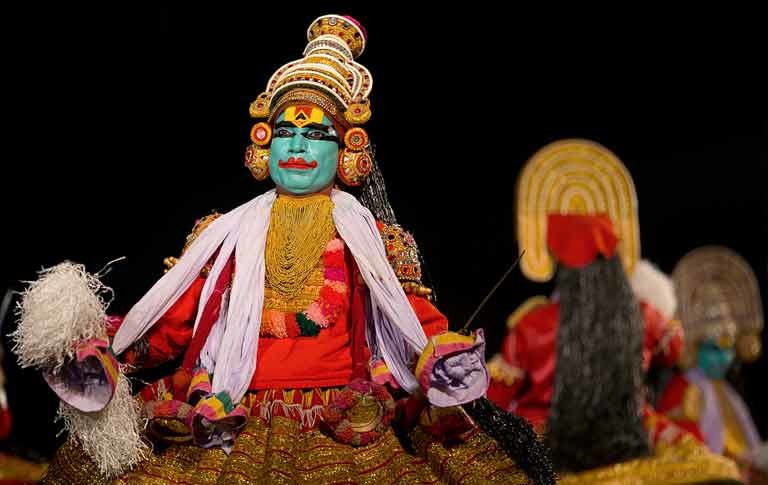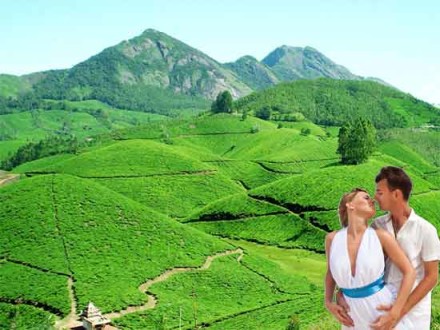Arjuna, the third of the five mighty Pandavas was a valiant warrior with unparalleled skill in archery. He was famous for its dancing skills which is portrayed in detail in various parts of Mahabharata. Arjuna played a vital role in ensuring the success of Dharma over adharma in battle against Kauravas at Kurukshetra. Overwhelmed with success and humbled with the support that Goddess Kali provided him during wartimes, Arjuna performs a dance as an act of devotion to Bhadrakali or Goddess Kali. The dance, later on, became to be known as Arjuna Nritham. Composed of unique rhythms and dance movements, it is now an essential ingredient of Kerala ‘s art form.
Significant features of Arjuna Nritham
Also known as “Mayilpeeli Thookam” or “Mayilpeeli Nritham” the Arjuna Nritham is one authentic dance form of Kerala that has survived oblivion with modern times. Arjuna Nritham is performed only by males, since it is an actual depiction of the dance that Arjuna – the warrior himself performed in honour of Goddess Kali.
The dancers sway to the tunes of peculiar couplets known as kavithangal. Each kavithangal explains a unique happening during the Kurukshetra battle which Arjuna overcame to attain success. The dance form is native to the regions of Kollam, Kottayam and Alapppuzha districts of Kerala.
Arjuna Nritham is usually performed in solos or pairs. The male dancers address the crowd before the performance begins with a recital of the kavithangal and what importance they have in the Puranas and ancient texts. The dance postures and movements are synchronous and bear unusual resemblance with the chuvads of kalaripayatu.
The use of traditional percussion instruments
Another particular feature of Arjuna Nritham is that it uses only percussions instruments that are hand made from the dead skin of buffaloes and cattle. Chenda, thalachenda and ilathalam (cymbal) are the common instruments that are used to set the musical rhythm to which dancers perform Arjuna Nritham.
Costumes and makeup used in Arjuna Nritham
The dancers who perform Arjuna Nritham adorn a special garment which is made of peacock feathers. Similar to the uduthekettu costume of Kathakali, the peacock garment is also worn by the dancers around their waists. In addition to the waist garment, the dancers also wear several head gears resembling a crown that Arjuna worn at the time of the battle. Green and red colour paints are also smeared over the faces of the dancers to give them a fiery look which Arjuna would have sported when the war concluded.
Arjuna Nritham throws opens the doors to Kerala and even the entire history of the Indian sub-continent. A visit to Kerala is never complete without watching a Arjuna Nritham recital. Book yourself a Kerala tourist package during the months of August to December when the temple festivals become centre stage for Arjuna Nritham recitals.





